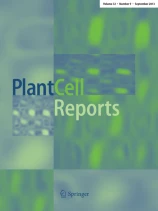Traditional knowledge of textile dyeing plants: A case study in the Chin ethnic group of western Myanmar
Ling, Tial C., Angkhana Inta, Kate E. Armstrong, Damon P. Little, Pimonrat Tiansawat, Yong-Ping Yang, Patcharin Phokasem, Za Khai Tuang, Chainarong Sinpoo & Terd Disayathanoowat
Diversity, 14(12), 1065. Published: Dec. 2022.
This study documents traditional knowledge of textile dyeing plants among 14 Chin communities in Myanmar, based on interviews with 2,070 informants. A total of 32 plant species from 29 genera and 24 families were recorded, with Chromolaena odorata, Lithocarpus fenestratus, and L. pachyphyllus being the most important. Most dyes were red, leaf-derived, collected from the wild, and fixed with firewood ash. The findings aim to revive natural dye use, strengthen cultural integrity, and guide preservation of traditional plant-based textile knowledge.

Preliminary analysis reveals that RCF1 confers resistance to Pseudomonas syringae pv. tomato DC3000 but impairs Botrytis cinerea infection
Za Khai Tuang, & Ling, Tial C.
Physiol. Mol. Plant Pathol., 125, 102002. Published: May. 2023.
This study investigates the role of the RCF1 gene, which encodes an RNA helicase with DEAD-box domains, in plant responses to pathogen infection. Using a loss-of-function mutant (rcf1-407), RCF1 was found to confer resistance to Pseudomonas syringae pv. tomato DC3000 through salicylic acid (SA) and NPR1-dependent pathways, while repressing SNI1 and jasmonic acid (JA) signaling. The mutant was more susceptible to bacterial infection but more tolerant to Botrytis cinerea, with lower free and conjugated SA levels and reduced expression of SA biosynthetic genes. These findings suggest RCF1 plays a dual role in modulating plant defense against bacterial and fungal pathogens.

Nutritional evaluation, fatty acid analysis and anticancer properties investigation of seeds from kan-zaw, a potential diet oil and medicinal plant
Moe Moe Lwin, Ye Jin, Xianpeng Yang, Hao Shen, Chao Qi, Yizhong Wang, Phyo Phyo Zin Oo, Za Khai Tuang, Shiyou Lü & Wannian Yang
Oil Crop Science, 6, (3), 122-127. Published: July. 2021.
This study investigates the seeds of Payenapara lleloneura Kurz. (Kan-zaw), an endemic medicinal plant from Myanmar’s Tanintharyi Region, for their nutritional and anticancer potential. The seeds are rich in fats and carbohydrates and contain over 70% α-eleostearic acid, along with β-eleostearic acid, both valued for anticancer properties and industrial uses. Physicochemical analyses were performed, and various seed extracts and oils showed significant cytotoxic activity against human cervical cancer (HeLa) cells.

Potential roles for pattern molecule of PAMP-triggered immunity in improving crop cold tolerance
Ye Jin, Za Khai Tuang, Yizhong Wang, Zhenjiang Wu & Wannian Yang
Plant Cell Reports, 41(2), 337–345. Published: Dec. 2019.
This study shows that flagellin 22 (flg22), a well-known pathogen-associated molecular pattern, can mimic pathogen infection to enhance cold tolerance in Arabidopsis, oilseed, and tobacco. Flg22 activated immunity and cold-related genes, and its protective effect was lost in salicylic acid (SA)-deficient or SA-pathway mutant plants. These findings indicate that flg22 enhances cold tolerance through an SA-dependent pathway.
